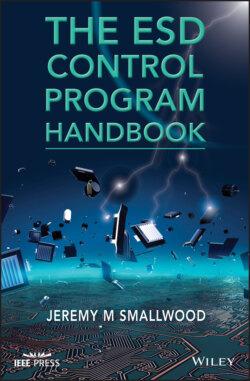Читать книгу The ESD Control Program Handbook - Jeremy M. Smallwood - Страница 16
1 Definitions and Terminology
ОглавлениеAs with any specialist subject there are many terms that are the “jargon” of the subject that can be confusing to the newcomer. There are also terms that have specific meanings in the context of these standards but may have different meanings in common parlance. The intention here is not to give strict and rigorous academic definitions, but to assist the newcomer to the field to understand the following chapters.
Sometimes a range of meanings is common in different industries. For example, the terms conductive, static dissipative, insulative or insulating, and antistatic can mean many different things to different people from different industry areas or in the context of different standards or electrostatic discharge (ESD) control product types. In most cases, only the meaning common in ESD control, and in particular in the context of the IEC 61340‐5‐1 and ANSI/ESD S20.20 and related standards, is emphasized here.
The task of supervising an ESD control program is often given to personnel from many technical and educational backgrounds. For this reason, the minimum of prior technical knowledge is assumed in this book.
Despite this, some of the terms used in this document are defined with basic mathematical relationships given where appropriate. This is because simple mathematics often helps to clarify the subject and, in some cases, may be essential to helping the user understand how to specify aspects of an ESD control program. In many cases, these aspects, and their practical importance and application, are discussed further in Chapter 2.
